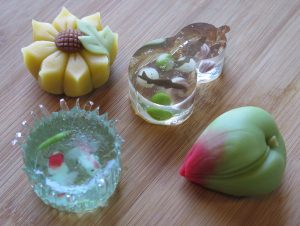Haiku conquering continents!
For today’s poetry news round-up we bring you a tie-in with recent posts on India’s burgeoning poetry scene and the growing popularity of Haiku as a  competitive activity.
competitive activity.
HaikuJam is poetry that is bringing together the poets and poetry lovers of India and Pakistan, and in the light of this year being the 70th anniversary of the partition of that great continent this is especially poignant.
HaikuJam’s mission is to promote ‘poetry without borders’, encouraging people to open up lines of communication and develop meaningful relationships; helping strangers to become friends. HaikuJam is actually an app, available on Google Play and the Apple App Store, and is a way for people all over the world to write poems together. One poet writes a line and someone else continues it with the next line, and so on. This is such an exciting and innovative way to write beautiful poetry; three people who could be anywhere in the world working together to compose a three-line poem. One such is this, entitled ‘Coffee With You’:

As you can see, unlike the Haiku Poetry Slams in Denver, this Haiku still follows the traditional format but with modern themes.
With the prestigious New York Times naming HaikuJam as one of the best three apps in the world to “jump-start creative thinking and spark new ideas” we’re sure this will take off in a big way.
Japanese Sweet Poetry
We make no apology for staying with the subject of Haiku as we bring you a story from the New York Times. Japan is of course the home of traditional Haiku poetry but what you may not know is that the Japanese love sweet treats particularly when they accompany a traditional tea ceremony. Japanese sweets are called wagashi and are completely unlike the gooey, sugary confections we in the west are used to. Not for them the likes of the sticky toffee and chocolate flavours we’re used to; the makers use ingredients like rice flour, kudzu powder, mocha (a sticky dough) and sometimes flowers. Each wagashi is characterised by a phrase and are, like Haiku, chosen to reflect moments in time from nature. One example is this:


Every Japanese sweet treat is meticulously concocted with the same loving care and attention that a Japanese poet gives to the Haiku. This is because the taste is not the most important aspect of the wagashi. The senses must be assailed and delighted by the texture of the sweet, the scent and even the shape of it with many forming miniature landscapes. Every one of the senses, touch, smell, taste and sight is given equal importance and, yes, the very sound of the names given to the sweets are designed to make you contemplate your surroundings.
The beauty of wagashi lies not in the artistry of its construction, nor in the taste and sensation in the mouth, but in the fleeting moment of its existence. Just like Haiku.


You must register to comment. Log in or Register.